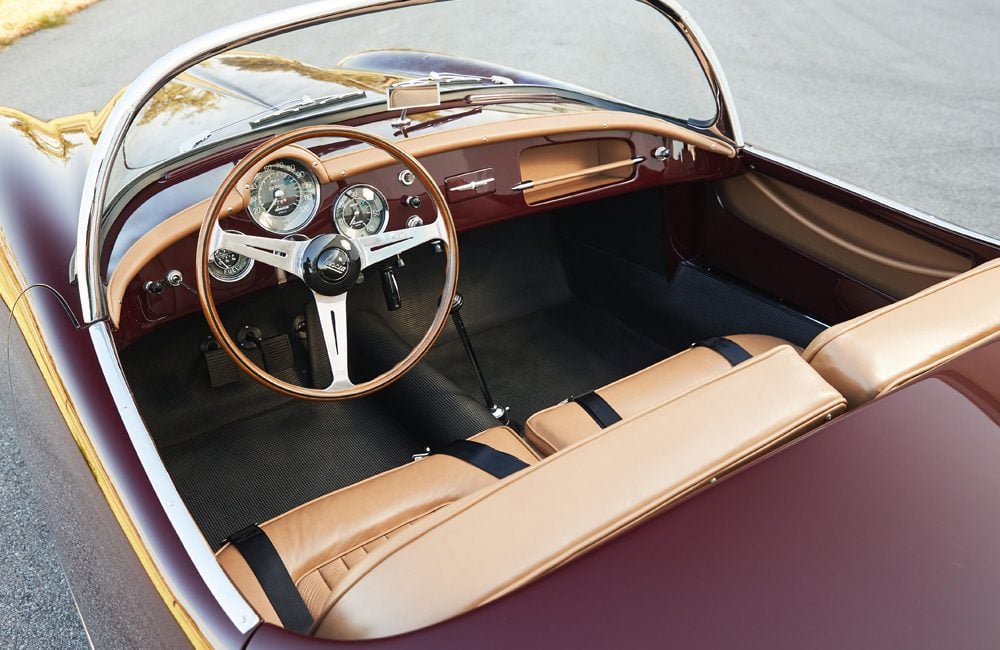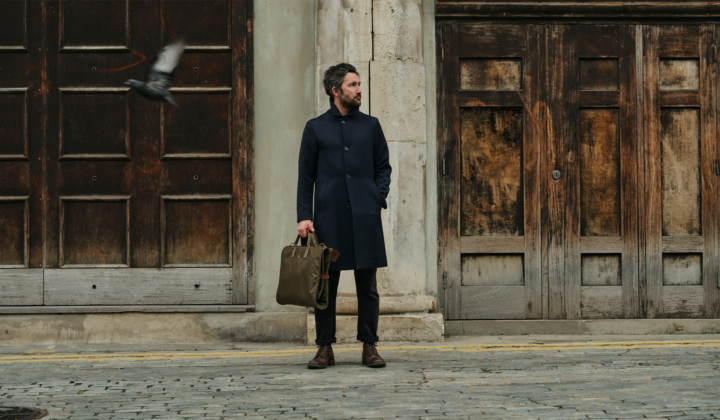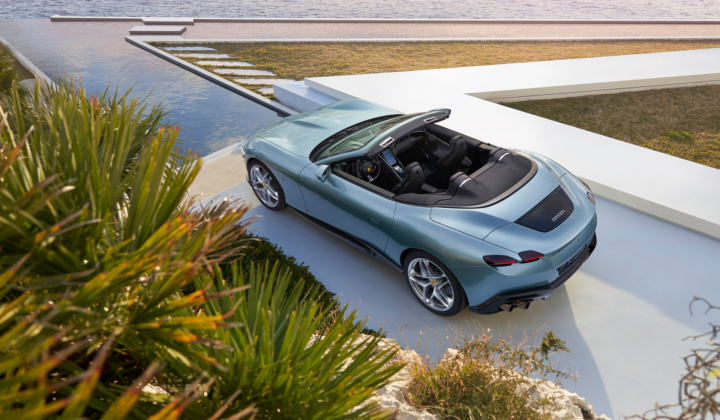Retro Drop Tops: The Coolest Vintage Convertible Cars Of All Time
The vintage drop-top will never be the most practical or reliable way to travel. It needs real care and attention, whether it’s keeping the fragile fabric roof fresh or the sunburnt leather interiors fed. But if you’re willing to take one on, we can’t think of a more sophisticated way of getting around.
These are our favourite vintage convertibles – some are worth extreme money, others are not. Not all of them are brilliant driver’s cars, and some are definitely less showy than others, but all speak to a time of real sophistication. They make anyone behind the wheel look like a true classic car connoisseur.
1969 Maserati Ghibli Spider
One of the lesser-known iconic Italian supercars from the 1970s is Maserati’s stunning Ghibli. This two-seater sports car has a front-mounted V8 engine and comes in two forms: a base model and a higher-performance SS. In either case, the Ghibli oozes elegance and sophistication but does so with an edgier modernist design language written by one of the great Italian masters.
The designer in question was none other than Giorgettio Giugiaro, who was part of Italian Carrozzeria Ghia at the time and the man responsible for future icons spanning four decades. The Ghibli itself arrived during a time of great innovation in car design; its sharp lines and extreme angles were a fierce counterpoint to the organic curves that had dominated sports car design for the preceding generation.
The Ghibli Spider wasn’t the only car of this era to push the boundaries of design, but what made it stand out was its wild proportions, which used long overhangs and a tight haunch over the rear wheels to look even more luxurious than its open-top counterparts.
Maserati as a brand might not have the same cache today as Ferrari or Lamborghini. However, real enthusiasts know there’s still a level of elegance associated with the marque that not many can match.
1963 Mercedes SL ‘Pagoda’
Mercedes has been famous for decades for elegant and sophisticated open-top cars, but when choosing just one for this list, we had to go for the 1963 Pagoda. Unlike much larger four-seater open-top models that were available at the time, the SL, or ‘Sport Light’, has always remained a favourite thanks to its petite proportions and timeless elegance.
Designed by Friedrich Geiger and Paul Bracq, the Pagoda nickname refers to the removable hardtop roof, which was included in the purchase price as a more secure and comfortable option for winter or cold-weather driving. Of course, regardless of which roof is up (or down), the effect is always a paragon of refinement and sophistication.
Despite the Sport Light name, the driving experience isn’t exactly sporty, making this one of the few cars on this list that’s preferable with an automatic transmission.
Values are strong, but not currently out of this world – due to nearly 50,000 being built between 1963 and 1971. That said, they’ll only go up from here.
Image credit: Mercedes Benz
1956 BMW 507
The BMW 507 is a far less common roadster. It was the product of an American importer’s insistence on a car to rival Mercedes’ range, which had already done so much business in the US. However, massive cost overruns for the 507’s development scuppered its success, leading to only 252 being produced between 1956 and 1960 – rather short of the 1,000 per year that was forecasted.
Rather than directly rivalling the Mercedes 300SL roadster, the 507 was meant to be priced below it, yet its 3.2-litre V8 had a higher cylinder count. Designed by Albrecht von Goertz, the 507’s classic body and tight proportions were pulled over the underpinnings of the BMW 501 and 502, making it less sophisticated than the Mercedes.
Yet out of context, this car is a stunning take on the post-war German roadster and incredibly rare because of its curtailed development. Today, its values are far beyond those of its Mercedes counterparts and, in our opinion, is even cooler – just don’t mention the fact that it nearly bankrupted the company.
Image credit: Top Gear Magazine
1971 Ferrari 365/4 GTS ‘Daytona’ Spider
It’s unusual for a car to be almost exclusively known by its nickname, but when it comes to the 1971 Ferrari ‘Daytona’ Spider, few know it was christened the 365/4 GTS. But ignoring the name for a moment, the Daytona Spyder is one of the most sought-after vintage convertibles due to its stunning Colombo V12 engine and styling that was decades ahead of its time.
Moving on from decades of classic convertibles like the 250 California, the Daytona introduced a more angular style by Leonardo Fioravanti at the iconic design house Pininfarina. Built between 1971 and 1973, they’re incredibly rare, with only 122 officially built.
This car sat alongside icons of the day like Lamborghini’s Miura. Still, in contrast to the fixed-head Daytona, which competed directly with the mid-engined supercar, the Spider offered something different to the closed-roof rival.
This also meant the Daytona Spider was more supercar than cruiser, making it an intense and aggressive car compared to the more laid-back models on this list. It’s also one of the most valuable, often changing hands for more than £2.5million, and is known for being converted into a convertible, making a certified original key to that immense value.
Image credit: Robin Adams ©2021 Courtesy of RM Sotheby’s
1961 Jaguar E-Type
We can’t have a list of the coolest vintage roadsters without the archetypal Jaguar E-Type. Designed by Malcolm Sayer to replace the XK120, the E-Type was part of the UK’s cultural revolution, transforming not just Jaguar’s image from old and stuffy to cutting-edge but, by extension, the whole of the UK, too.
While the Series 1 Coupe often grabs the headlines with its fastback body, it was the roadster with the roof down that, in our opinion, took it further. The narrow body and segmented windscreen created a fuselage-like appearance that looked almost impossible in accommodating both people and an engine.
The interior was just as much of a triumph, with a turned metal dash on some models that would glint in the sun for the two weeks of the year it shined in London. Yet the E-Type was a global sensation, conveying Britain’s new image to places like the US under its XKE moniker, as well as Australia and even parts of Asia.
Image credit: Auto Express
1995 Bentley Azure
While not technically vintage in the same respect as many other cars on this list, when it comes to roof-down cruising, few do it with the panache or elegance of a Bentley Azure. Based on the ancient Arnage/Continental platform used for the best part of half a century, the modern Azure of the early 2000s is a time capsule of British craftsmanship and heritage that even Rolls-Royce didn’t have an answer for at the time.
Under the vast body, it would comfortably seat four in the finest leather and timber surrounds – the latter still laminated and polished by hand to create a near-mirror finish. Under the gigantic bonnet is an engine that could trace its roots back even further, as the iconic 6.75-litre V8 engine had been in service by both Bentley and Rolls before that.
Yet more than just its build quality was its sheer size. At over 5.3m long and sitting quite tall for an open-top car, the Azure reeks of old money, matched with the glamour of Europe or California that few, if any, rivals could ever achieve.
Find a late model in the right colour; almost nothing else on the market will hit the old-money aesthetic as convincingly.
1954 Lancia Aurelia B24S Spider
Lancia’s don’t often spread far beyond automotive circles. Still, before their reputation for rally cars and unreliability stuck, models like the Aurelia made it one of the most elegant manufacturers around.
The Italian brand was founded in the same cradle of greatness that saw the creation of Ferrari and Lamborghini, but its history stretches much further back, finding its origin around the time of Alfa Romeo, which is a much older brand.
As well as being lovely to look at, Lanica’s greater claim to fame was its quirky and often brilliant engineering, which led to many firsts for production cars. For example, the Aurelia was one of the first cars to feature a V6 engine.
Yet its place on this list refers specifically to the rare B24S Spider, the drop-dead gorgeous two-seater designed by Pininfarina. It might be a left-field option, but enthusiasts know its worth, so values often exceed more visible classics like the Jaguar E-Type.
Image credit: Bonham Cars
1966 Alfa Romeo Duetto Spider
Alfa’s classic compact two-seater roadster is the final entry to our list thanks to its stunning design, stirring twin-cam four-cylinder engine and the image it portrays of a more laid-back type of classic car ownership.
Styled by design house Pininfarina as so many on this list, the original Duetto’s sloping tail design often sits on many lists as the ultimate expression of Italian design.
Of course, what helps is that even for the time, Alfa’s twin-cam engine made it brilliant fun to drive on tight Italian roads, with enough flex in the body to do half of the suspension’s job. Inside, the simple dash and wooden steering wheel were also on point for the era and often survive today with little real maintenance required.
Yet despite its humble disposition, the Spider Duetto has increased in value markedly, suggesting that the ‘la dolce vita’ it so clearly represents might just be achievable with a set of Alfa Romeo keys in your pocket.
Image credit: Bonham Cars







































